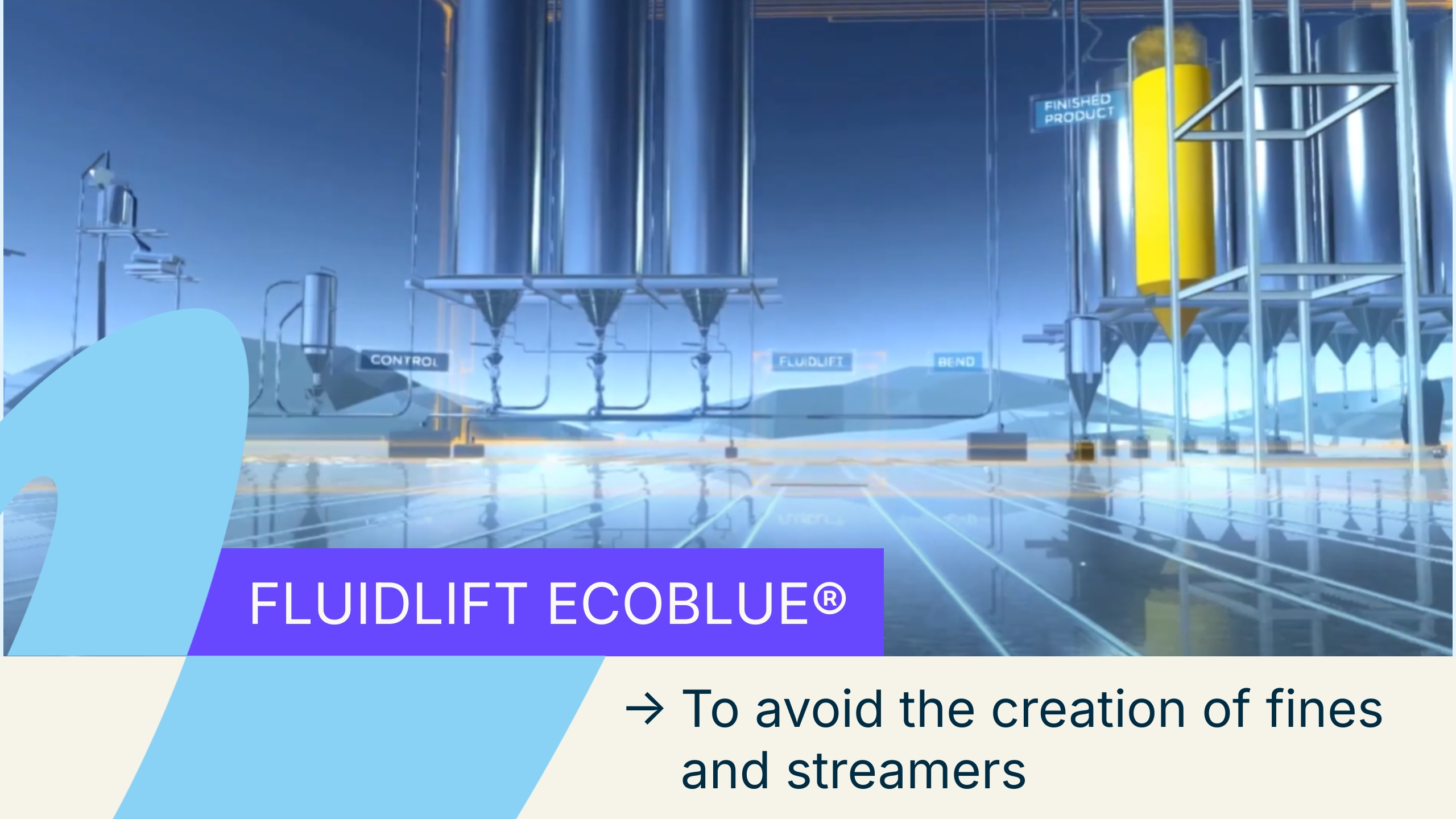After the material leaves an extruder, it travels through an elaborated conveying system. Pneumatic conveying is usually the method of choice as it is a flexible system allowing for any directional changes in the plant. Despite its advantages, the system also comes with a variety of challenges. Depending on the years of operation, one of the most nagging problems is the formation of fines, layers and streamers. This leads to two additional problems:
Decreased product quality
The typical solution in regard to streamers is to use shot peened pipes. However, even they will be worn out at some point − especially if you convey polyolefins with abrasive additives. As a result, attrition will increase which negatively affects the material. Ultimately, operators will be confronted with contamination and a decreased product quality.
Higher operational costs
The necessity to elutriate the polyolefin pellets and hence to collect and dispose waste is not only bad for the environment but can also become extremely costly. After running the systems for several years, streamers and fines can certainly skyrocket your operational costs. At the same time, regular shot-peening intervals or even the replacement of pipes bring up maintenance costs.
To overcome these challenges, Coperion has made lots of R&D efforts regarding the optimization of the process. One outcome is FLUIDLIFT ecoblue®, a solution which has proven to significantly reduce attrition during pneumatic conveying. Thanks to this unique approach, the creation of fines and streamers is not only effectively reduced, but also decreases the energy input as well as the handling costs.
How does Coperion’s FLUIDLIFT ecoblue® work?
The heart of the solution is based on the injection of a defined amount of water into the conveying air. Before configurating the system, Coperion’s experts will thoroughly examine whether the product being conveyed is suitable for FLUIDLIFT ecoblue® and then determine the ideal water content. In addition, atmospheric factors are taken into account since plants operating in cooler climates may require additional measures. Most polymer pellets work well with FLUIDLIFT ecoblue® − only a few especially porous materials do not support any kind of humidity in the conveying line as they are prone to absorbing moisture. The application of water has two positive effects: On the one hand, the thin water film lays around the piping walls and serves as a slipping agent. On the other hand, the conveying air is humified and cools down the process. As a result, friction is effectively minimized, and the pressure drop is reduced while the residence time is kept short.
Initially, many polyolefin manufacturers view the usage of water with skepticism. Fortunately, these concerns can be quickly resolved. The water is only used for conveying the material and is barely in contact with the product. Hence, the water content of the pellets does not change. Self-evidently, the water needs to be effectively removed at the end of the process. How does FLUIDLIFT ecoblue® pull out the water? As the pressure decreases the water absorption capacity of the air increases until in the end all moisture is absorbed by the conveying air. This gives us the possibility to exchange the humid air by using an elutriator, a conveying gas separator or even purge air from degassing silos. The product will remain dry throughout the process (no dryer needed) while at the same time condensation downstream the conveying system is effectively avoided.
FLUIDLIFT ecoblue® is a retrofitting solution for strand phase conveying. In its minimum set-up it comprises an ecoblue control unit (ECU) and a water dosing unit. The ECU calculates, among other things, the right amount of water which is then communicated to the dosing equipment in order to avoid overdosing at all times. In addition, an exchange system (such as an elutriator, degassing silo or conveying gas separator) as well as an airflow control unit is needed. Generally, it is possible to switch between the conventional dry mode and FLUIDLIFT ecoblue®. Such applications may be necessary if you have different grades to be conveyed in the same line, one of them is water-sensitive.
What are the benefits of FLUIDLIFT ecoblue®?
Countless tests as well as the industrial installations that were successfully commissioned so far have shown that FLUIDLIFT ecoblue® is a reliable approach to keep friction to an absolute minimum. Compared to conventional conveying systems, FLUIDLIFT ecoblue® reduces attrition by 70-90%, relative to the type of polymer. Hence, the product is put under less stress through which the product quality tends to be higher. At the same time, the new set-up will minimize production loss and reduce waste significantly as dust does not occur in the first place. Existing dust that enters the conveying system along with the material (e.g. from a dryer in the system) does not affect the process. That means polymer dust will not take up the water but will go through the conveying unaltered (not creating a slurry or crust on the pipes). Depending on the product, isometry, temperature and other parameters, the conveying pressure can be reduced by up to 35% which leads to energy savings or alternatively to a higher production rate. Through the reduction of friction and lowering the pressure drop ecoblue can facilitate longer lines for the same throughput.
In summary, the reduction of friction is a key parameter if you want to make your pneumatic conveying processes more efficient. FLUIDLIFT ecoblue® is a proven method to prevent friction and the creation of dust before it occurs. Especially polyolefin manufacturers benefit from the add-on solution and achieve a return of investment within a short time frame.

